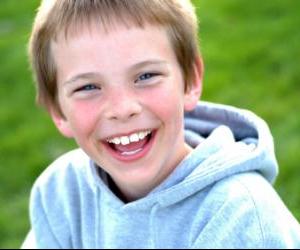
Autism & twelve fitness tips
Eric Chessen, M.S., YCS
Email successfully sent
close windowI have the interesting position of watching trends in special needs and fitness. Last year several articles and web sites brought attention to the increasing incidence of obesity and lifestyle-related diseases/illnesses among the young special needs population. As the current generation of young people with autism and related disorders grows into adolescence, teenage years, and early adulthood, they are getting less healthy.
Most New Year’s resolutions go…unresolved. It usually does not much matter whether it is January 1st or August 16th, people enact change when they become motivated. If you are ready to introduce or enhance fitness for the special needs individuals with whom you work, teach, or live, here are 12 ways to make exercise more fun and effective:
1) Short periods of activity. Pick 3 or 4 activities to do anywhere from 10 seconds to 5 minutes (with breaks) throughout the day. Having shorter durations of fitness can be less anxiety provoking and more tolerable for those with aversions to movement or new activities. A few favorites are medicine ball throws, bear walks, hops, overhead carries, rope swings, and jumping variations.
2) Begin introducing vegetables. They may not even want it on the table near the plat the first time, but vegetables are important. Keep reintroducing them. Don’t make a fuss. Don’t even acknowledge that the broccoli spear is there Let them discover it.
3) Introduce medicine ball throws (push throw, overhead, scoop). The soft, durable balls from Dynamax (www.AutismFitness.com/equipment) are the absolute best.
4) Ditch treadmills and other running machines for rope swings, short sprints, and frog hops. All the cardiovascular benefit (more, in fact) without the boring-ness. I’ve yet to meet anyone who really, really enjoys the treadmill.
5) When in doubt, pick something up and carry it overhead. Most of my athletes had low muscle tone with poor posture when they began exercising. Overhead carries solve both these issues.
6) Use fitness as an opportunity for socialization. Want to see interaction come to life? Have two students toss a ball back and forth or perform tandem (together) jumps forwards, backwards, and side-to-side. I’ve had two or more athletes carry a heavy object overhead for distance. See #5.
7) Provide Choices. I like to have my athlete pick which activity or piece of equipment they want to use first. It promoted independence and autonomy.
8) More Protein. It builds healthy lean muscle and increases satiety.
9) Build a fitness network. Get together with other families and plan group hikes, bikes, and group exercise activities.
10) Play Outside. Something about being outside makes exercise more fun. It also promotes generalization or crossover of skills from one environment to another.
11) Climb stuff. Climbing up a rope ladder or slide requires trunk stability, upper body strength, coordination, and grip. It is one of the least-performed yet most effective fitness activities.
12) Attend an Autism Fitness PAC Profile Workshop. Sure, it’s shameless self promotion, but you won’t find this information anywhere else and certainly not in the live, dynamic environment of an Autism Fitness workshop. The information and activities can be used with ANY individual or group. Get more info at www.AutismFitness.com/seminars.html
Courtesy of Parenting Special Needs Magazine
Related Articles
Video: Autism and problems of self-medication, drugs & alchohol
Life on the autism spectrum comes with challenges, some more difficult than others. Complicating the situation ..
Autism & 5 steps to getting an iPad covered by insurance
As a parent of a child with special needs, I understand firsthand the financial struggles that come with the j ..
Adults with autism: becoming the directors of their own treatment teams and treatment plans
Many of our students/clients received some level of support through school based 504 plans, IEPs and/or from c ..

